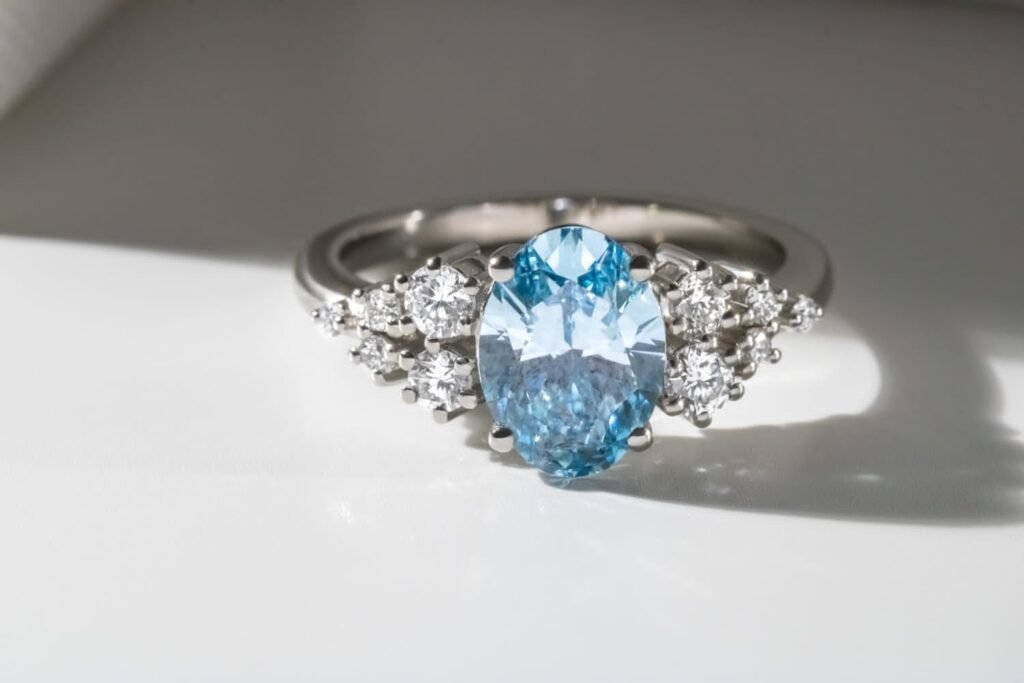The blue diamonds are simply tremendous looking stones, and have lured many collectors and enthusiasts far and wide. Blue diamond 1, for instance, is one of which where the color, the clarity and the value come together in a way that you won’t find in many other diamonds. Here we delve into the birth, color, quality, and market trends surrounding blue diamond 1 so you can understand that this gemstone is a classic, iconic choice.
The Rarity of Blue Diamond 1
Rare indeed are blue diamonds. They are blue because their crystal structure includes trace amounts of boron. Diamonds are found in two spots of the planet, South Africa and Australia, where the mines are the only real sources for this type of diamond. Blue diamonds of all types, especially those such as blue diamond 1, of scarcity and unusual color, are very much in demand among collectors and investors.
Characteristics of Blue Diamond 1
Part of what makes blue diamond 1 so special is its color grading. This category of diamonds features a vivid blue shade of light to deep blue that is lovely in itself. Blue diamonds are usually graded for color intensity, clarity, cut and carat weight by the Gemological Institute of America (GIA).
The Market Value of Blue Diamond 1
Blue diamond 1 is very rare and has high market value. Recently, blue diamonds have been in high demand, selling for more than the stones themselves at Christie’s and Sotheby’s, two upscale auction houses. The blue diamond’s price ranges from $15,000 to over $100,000, depending on its color intensity, purity, and place of origin.
Difference Between Natural vs Lab-Grown Blue Diamond
Nowadays lab grown diamonds have been popular due to the advancement of technology. Lab grown blue diamond 1 is an appealing alternative to traditional blue diamonds, as those looking for blue diamonds get the beauty without the high price. The diamonds produced are High Pressure High Temperature (HPHT) or Chemical Vapor Deposition (CVD) processes, but are chemically and physically indistinguishable from the natural partners.
One of the biggest advantages of lab grown blue diamonds is that they are so cheap! Because they are grown in a lab, the blue diamonds are about 40 per cent cheaper than natural blue diamonds and could therefore appeal to anyone with blue diamond fever at an affordable price. However, collectors, investors haven’t been able to replace natural blue diamonds, including blue diamond 1, because they’re rare and formed naturally.
How to Buy a Blue Diamond
Purchasing a blue diamond 1 requires careful consideration and knowledge of the four Cs: Colour, Clarity, Cut and Carat. For shopping blue diamonds, focus on color and clarity as these elements have the greatest effect over beauty and value of a blue diamond.
Buy from a certified jeweler only that provides his diamond with a GIA certificate which validates the authenticity and the quality of the stone. Buyers can learn the value of a purchase by receiving a GIA certificate which includes details on color, clarity, and origin. Furthermore, think about placing it in jewelry which complements its rich color such as white gold or platinum.
Why Choose a Blue Diamond?
Blue diamonds are now in vogue among authors because they are exclusive and as colored stones gain popularity in jewelry. This then naturally led to the cementing of blue diamond 1 into high end jewelry collections and as a very special choice, whilst at the same time giving a situation where it is becoming very sought after for its huge market value.
Final Thoughts
Among gems, a blue diamond is a beautiful platinum edition and a long term value. With even more demand, buying blue diamond 1 could be a great investment and dazzling part of any jewelry collection. Knowing the qualities and investment value of a blue diamond helps buyers to buy a blue diamond that meets their style as well as their financial goals.
